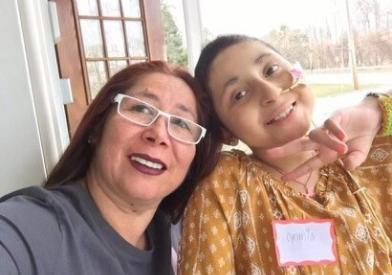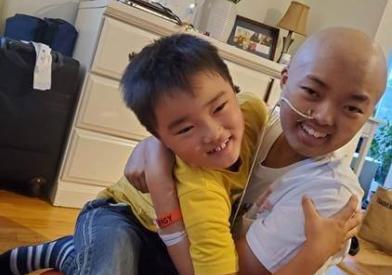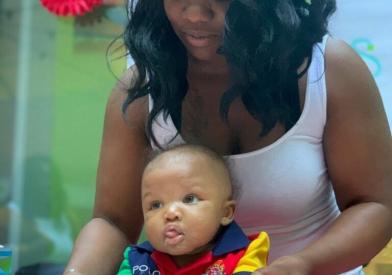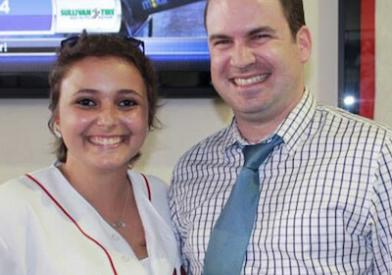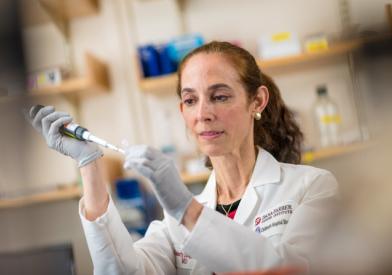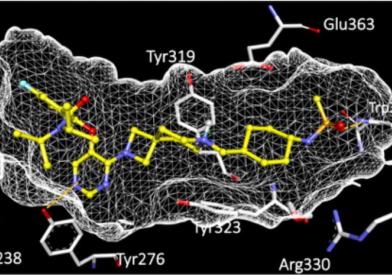Types of Leukemia in Children
Acute lymphoblastic leukemia (ALL) (also called lymphocytic or lymphoid leukemia) is the type of leukemia that affects cells called lymphocytes. ALL most commonly affects children between the ages of two and three, but it also affects adults. ALL accounts for about 80 percent of childhood leukemia cases each year in the U.S. It develops quickly, over a period of days or weeks.
Relapsed acute lymphoblastic leukemia (ALL) is when acute lymphoblastic leukemia returns after patients have undergone treatment for the disease. Relapsed ALL may occur even with aggressive therapy. It may occur during any of the stages of treatment, or months or years after treatment has ended.
Acute myeloid leukemia (AML) (also called myelogenous, granulocytic, myelocytic, or myeloblastic leukemia) affects cells called granulocytes (such as neutrophils or eosinophils). It is the second most common form of leukemia in children and accounts for about 20 percent of all childhood leukemia cases in the U.S. AML generally occurs by the age of two years and is not often seen in older children until the teenage years. Like ALL, it develops quickly, over days or weeks.
Chronic myeloid leukemia (CML) is very rare in children. Unlike ALL and AML, it develops slowly, over a period of months or years.
Juvenile myelomonocytic leukemia (JMML) is a rare type of blood cancer that occurs when bone marrow production of white blood cells becomes severely dysregulated. It is sometime categorized as a myeloproliferative neoplasm (a blood disorder in which abnormal bone marrow cells produce too many blood cells) instead of a cancer. JMML accounts for only about one to two percent of childhood leukemia cases, and it mainly affects children younger than four years old.
The type of childhood leukemia (lymphoblastic or myeloid) is determined by the type of bone marrow cell from which the cancer develops.
All blood cells start out as hematopoietic stem cells, which means they can develop into any type of blood cell. When leukemia develops from a stem cell, it is typically chronic myelogenous leukemia (CML).
Early in its development, the stem cell becomes either a lymphocyte precursor cell or a myeloid precursor cell. Acute lymphoblastic leukemia (ALL) is the type of cancer that develops from lymphocyte precursor cells. Acute myelogenous leukemia (AML) is the type of cancer that develops from myeloid precursor cells.
Causes of Leukemia in Children
Leukemia is cancer of the blood and develops in the bone marrow. The bone marrow is the soft, spongy center of the long bones that produces the three major blood cells: white blood cells to fight infection; red blood cells that carry oxygen; and platelets that help the blood to clot and stop bleeding. When a child has leukemia, the bone marrow, for an unknown reason, begins to make white blood cells that do not mature correctly but instead, continuously reproduce. Normal, healthy cells only reproduce when there is enough space for them to fit.
The body can regulate the production of cells by sending signals of when to stop. With leukemia, these cells do not respond to the signals to stop reproducing, regardless of space available. These abnormal cells reproduce very quickly and do not function as healthy white blood cells to help fight infection. When the immature white blood cells, called blasts, begin to crowd out other healthy cells in the bone marrow, the child experiences the symptoms of childhood leukemia.
In nearly all cases, it is not known what causes leukemia. The majority of childhood leukemias are acquired genetic diseases. This means that gene mutations and chromosome abnormalities in leukemia cells occur sporadically (by chance). The abnormalities found in leukemia cells are not found in the other cells of the body.
The Role of the Immune System in Leukemia
The immune system plays an important role in protecting the body from disease and possibly cancer. An alteration or defect in the immune system may increase the risk for developing leukemia. Factors such as exposure to certain viruses, environmental factors, chemical exposures, and infections have been associated with damage to the immune system, though it is not certain how these factors may contribute to childhood leukemia.


